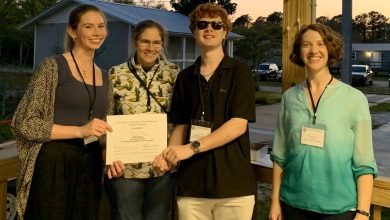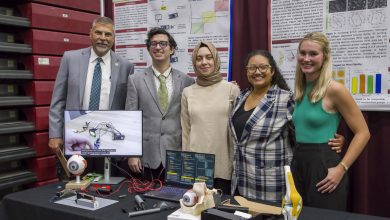Nomadic Planets and the Interstellar Zoo
Researchers previously thought the space between the stars was empty. In fact, the opposite turns out to be true – it is populated with debris of all sizes, including planet-sized nomadic worlds that might host life. New research from a Florida Tech astrobiologist examines this broad class of objects that are not gravitationally bound to any stars.
In a research paper highlighted recently in the highly-rated astronautics journal Acta Astronautica, Manasvi Lingam, along with researchers from the University of Luxembourg and Space Initiative, Inc., studied the movement of nomadic planets through our solar system. What they concluded is that there may be hundreds of planets in the interstellar space between the solar system and the nearest star.
“If you draw a line connecting the solar system and the nearest planetary system (associated with the star Proxima Centauri), and then you construct a bubble enclosing these two planetary systems, then you can study what are the number of these nomadic worlds that could exist in this bubble, and the answer seems to be that there are hundreds of them that are just whizzing by through interstellar space, and they’re not yet detected,” Lingam said. “Based on our best estimates coupled to the available data, our models indicate that there are hundreds of these planets moving through space.”
Over the last five years, researchers unrelated to this work have detected two small objects passing through the solar system, Oumuamua and Borisov. These interstellar objects passing through the solar system were very small (roughly about one-tenth of a mile in size). By using this astronomical data, the team was able to estimate what the number of these nomadic planets would be.
The above data was combined with the data from astronomical observations through a technique known as gravitational microlensing, which is a way of detecting distant planets through Einstein’s theory of relativity. Using these different sources of data, Lingam and collaborators were able to figure out there might be hundreds of these planets inhabiting the interstellar space between the sun and the nearest star.
“This method has been used to study planets around other stars as well. We constructed a whole spectrum of these nomadic worlds for our models, ranging from small ones, which are about a hundred miles in size, to ones larger than the Earth,” Lingam said. “In other words, there is a whole spectrum of these worlds traversing interstellar space.”
These planets are traveling from long distances, perhaps some of them may originate from hundreds or thousands of light years away and visiting our galactic neighborhood. Observers can survey them via appropriate scientific instruments (e.g., cameras, spectrometers). As these planets travel across our solar system, researchers can obtain valuable clues about their histories, what types of surfaces they possess, whether they might host life, and much more.
“You can compare this situation to a zoo or wildlife preserve, because in a zoo you can learn about animals from Asia, from Africa, from Australia and everywhere in just one place,” Lingam said. “Likewise, our backyard, our modest cosmic backyard, has these planets traveling from all parts of the galaxy and just whizzing by. Hence, with comparatively much less effort than visiting various regions of the galaxy, we can monitor them and learn a lot about the different parts of the galaxy, how these planets were formed and ejected, and so on.”
Lingam and collaborators spent most of the paper investigating what types of propulsion systems could get us to these nomadic worlds, the interstellar visitors from myriad locations in the galaxy. The authors found that chemical propulsion is ineffective at reaching these worlds. In contrast, several existing alternative propulsion systems, such as electric propulsion, may be able to survey smaller objects (with sizes of 100 miles) in a timescale of 50 years, which is about the same amount of time that the Voyager spacecraft have been operating. Lingam noted that, to study the largest worlds (Earth-sized or bigger), the best technology would be light sails propelled by laser arrays; these light sails behave akin to a sailboat, and the analog of the wind is the power provided by the laser array.
As this multidisciplinary work combines astrobiology, planetary science, astronomy, and aerospace engineering, Lingam foresees many avenues for exciting research in the future.





